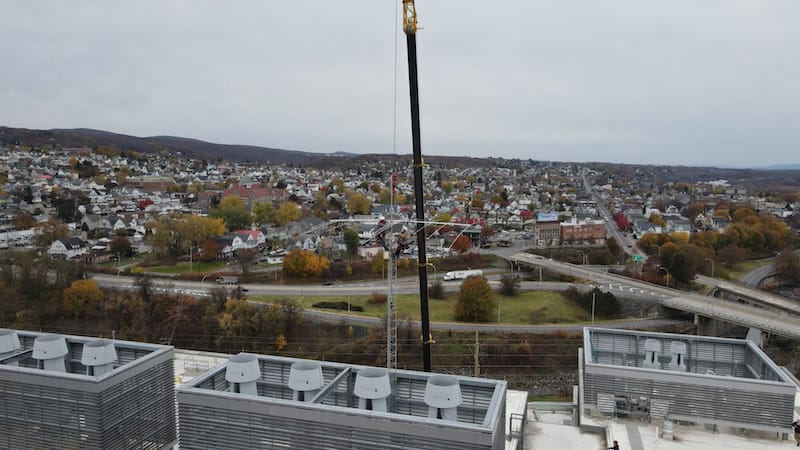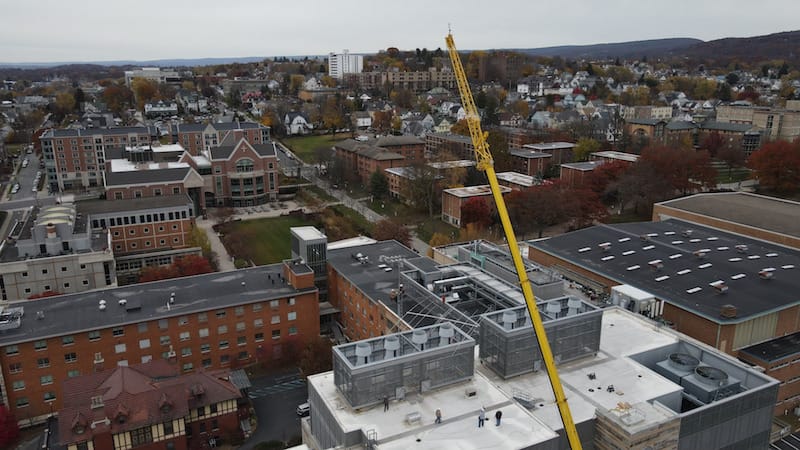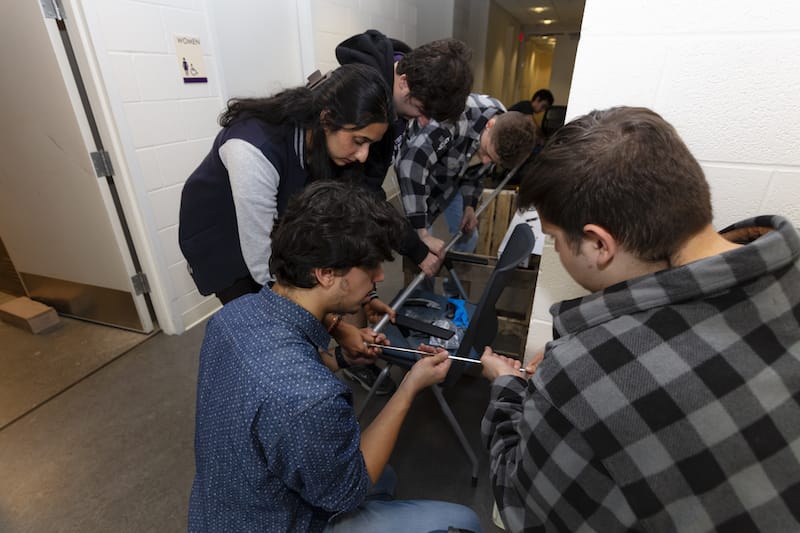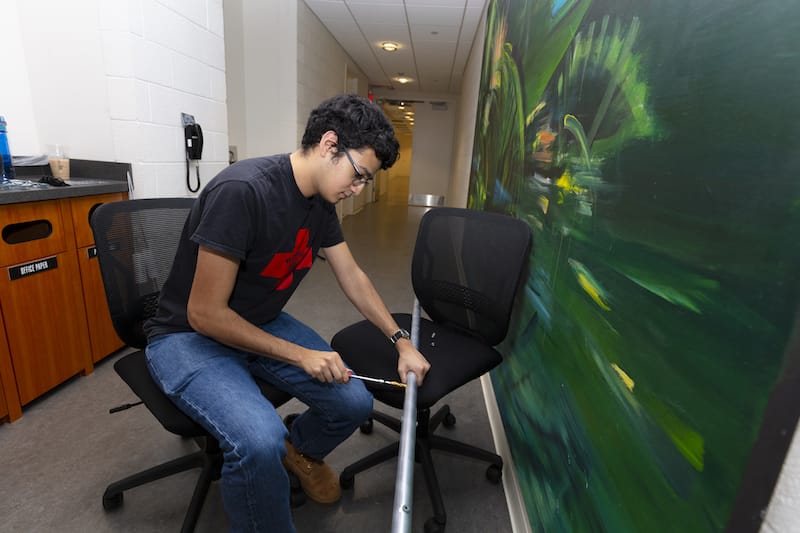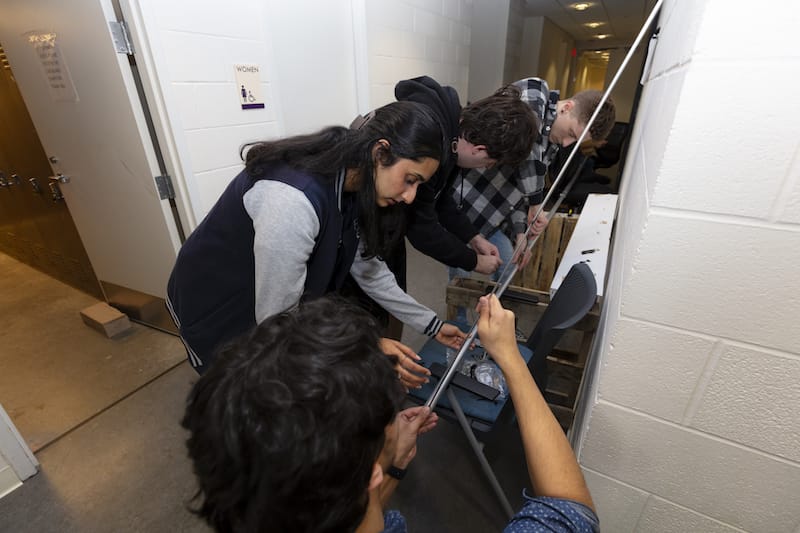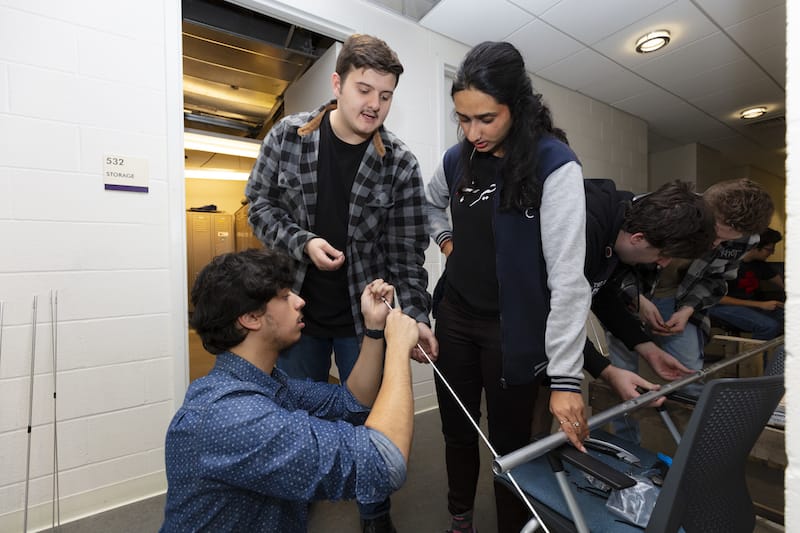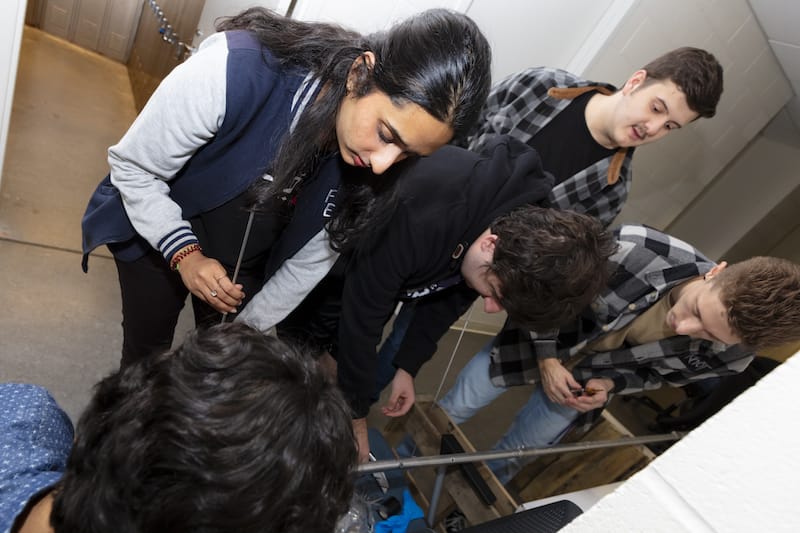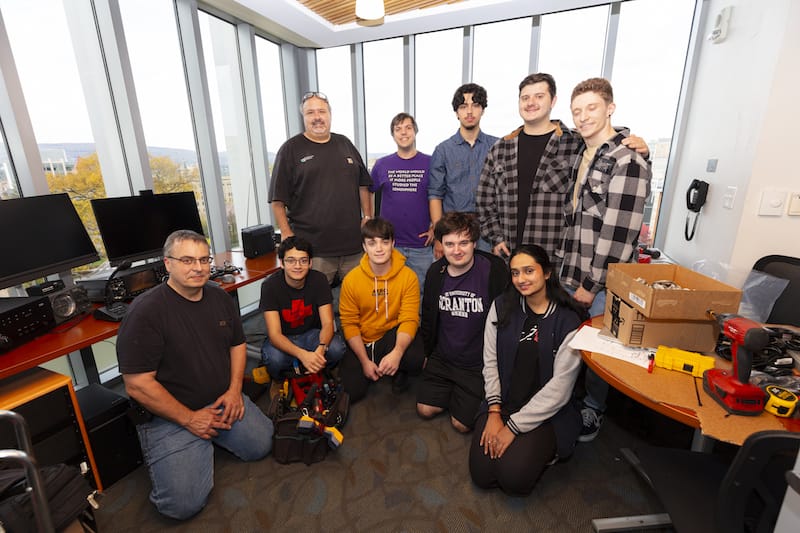University Ham Radio Station Equipment Installed
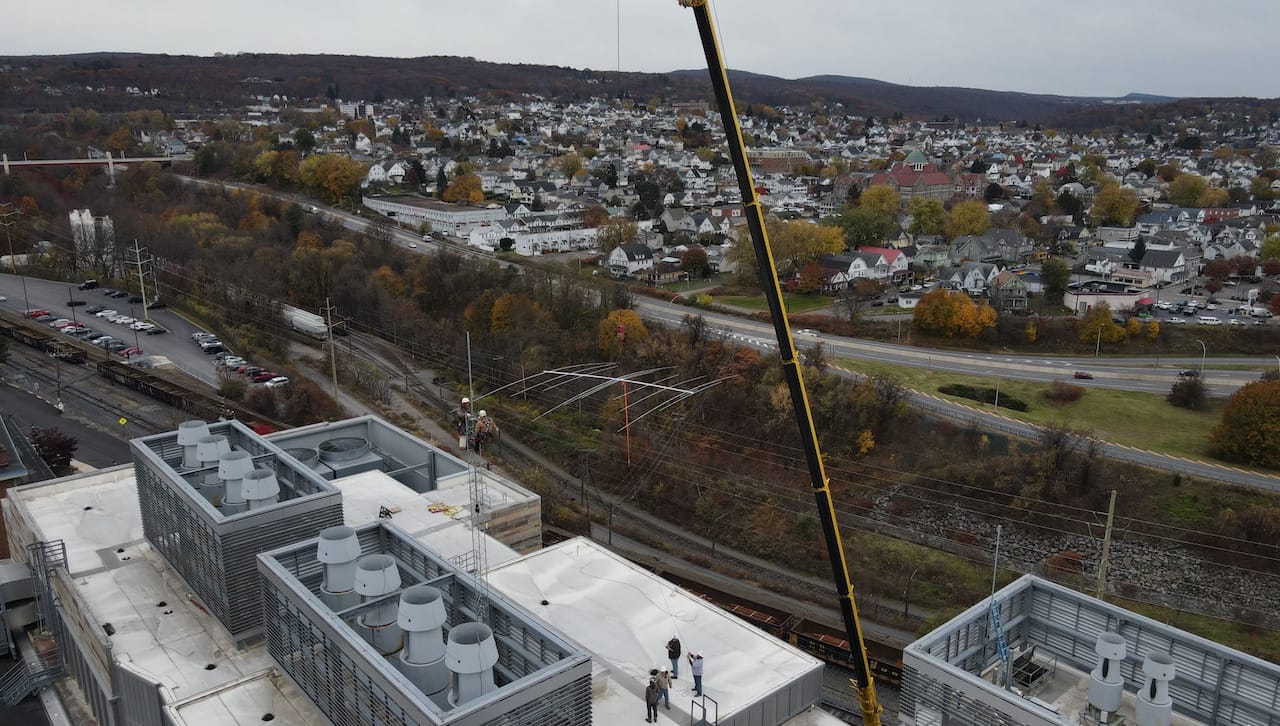
State-of-the-art ham radio equipment and antennas are being installed on the fifth floor and roof of the Loyola Science Center for a new student amateur ham radio station funded by a nearly $200,000 Amateur Radio Digital Communications (ARDC) grant awarded to Nathaniel Frissell, Ph.D., assistant professor of physics and engineering at The University of Scranton, in addition to more than $20,000 received in private donations from Dr. Mary Lou West, Ed Hayes and Jeff DePolo. The new capabilities for W3USR: The University of Scranton Amateur Radio Club will also allow for ongoing and future Ham Radio Science Citizen Investigation (HamSCI) research projects to be undertaken by Dr. Frissell and University students.
Antenna systems installed on the roof of the Loyola Science Center (LSC) include a 40-foot tower with a Skyhawk High Frequency antenna for 14, 21, and 28 MHz, as well as VHF/UHF satellite and microwave antennas, some with rotating mounts. New equipment includes heavy-duty controllers, all-mode transceivers, speakers, desktop microphones and other components that allow for students to operate ham radio units.
“The main amateur radio station will be located in a room on the fifth floor with floor to ceiling windows that have panoramic views of the city and will feature state-of-the-art operating positions, so it will be a very attractive place for students to learn about amateur radio, radio science and radio engineering,” said Dr. Frissell. An additional room on the same floor with equipment and antenna connections will be used as a lab for controlled HamSCI space research projects.
The new station capabilities will also allow additional student learning and community service opportunities.
“The system is tied into the LSC emergency power system, so that the system could be part of the local emergency communications network,” said Dr. Frissell, who has already involved student members of the University’s Amateur Radio Club with emergency response training with the Luzerne County Emergency Communication Agency.
In addition, during the installation, students helped assemble antennas under the tutelage of Jeff DePolo of Broadcast Sciences, L.L.C., who is leading the installation. DePalo has worked on similar projects at numerous colleges, including the University of Pennsylvania, Temple University and Drexel University.
“The installation has given us great hands-on experience of what it will be like when we enter the workforce,” said Tom Pisano, an electrical engineering major from Staten Island, New York, as he and fellow students helped assemble antennas.
He and his fellow students had never heard of Ham radio prior to coming on campus, but they now are licensed ham radio operators and amateur radio enthusiasts.
GPI engineering assisted with the review of the plans for the installation and Mulrooney Spoorter, Inc., assisted with the electrical installation.
Dr. Frissell, who serves as moderator for W3USR: The University of Scranton Amateur Radio Club, is looking forward to planning an Open House for the new station when the installation is complete.
Members of W3USR: The University of Scranton Amateur Radio Club help with installation of equipment and antennas for a new, state-of-the-art amateur ham radio station in the Loyola Science Center that is supported through a $196,241 Amateur Radio Digital Communications (ARDC) grant awarded to Nathaniel Frissell, Ph.D., assistant professor physics and engineering, and private donations. On the site of the new radio station are, front row, from left: David Karr of Broadcast Sciences, L.L.C.; Gerard Piccini, an electrical engineering major from Monroe Township, New Jersey; Nicholas Guerra, a computer science major from Scranton; James P. (JP) Fox, a computer science major from Hillsborough, New Jersey; and Zainab Shah, a computer engineering major from Hellertown. Standing, Jeff Depolo of Broadcast Sciences, L.L.C.; Dr. Frissell; Alexandros Papadopoulos, a computer science major from Scotrun; Tom Pisano, an electrical engineering major from Staten Island, New York; and Michael McBride, a physics major from Glenmoore.


